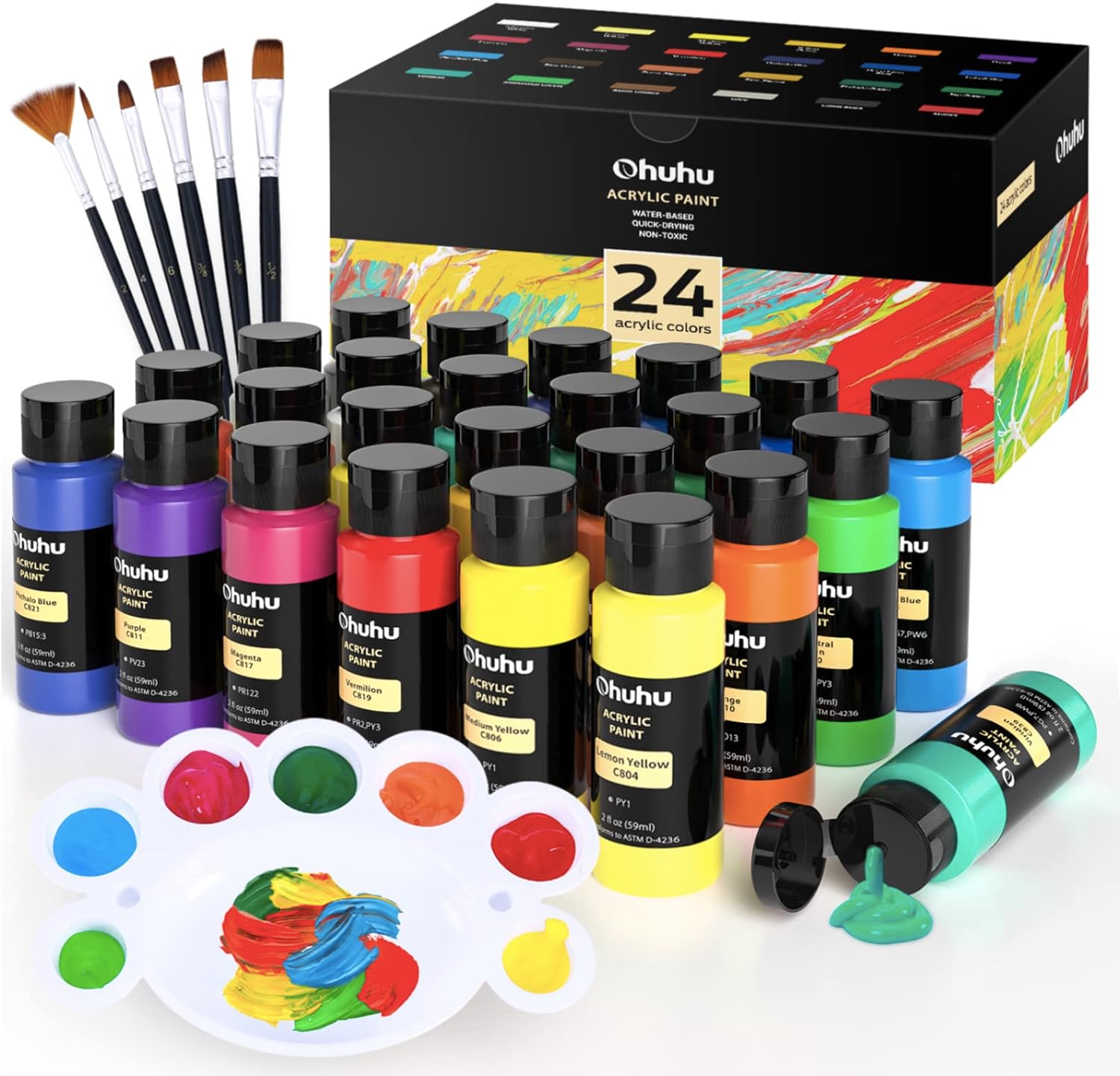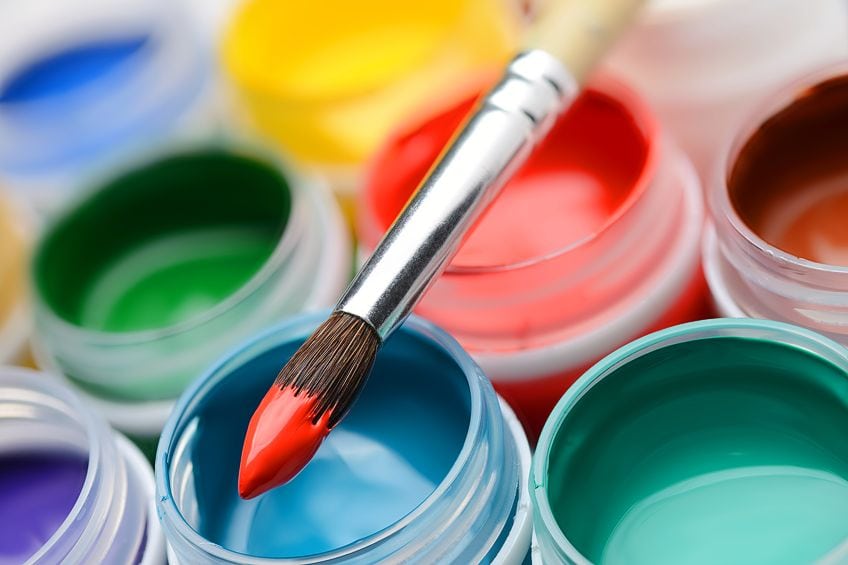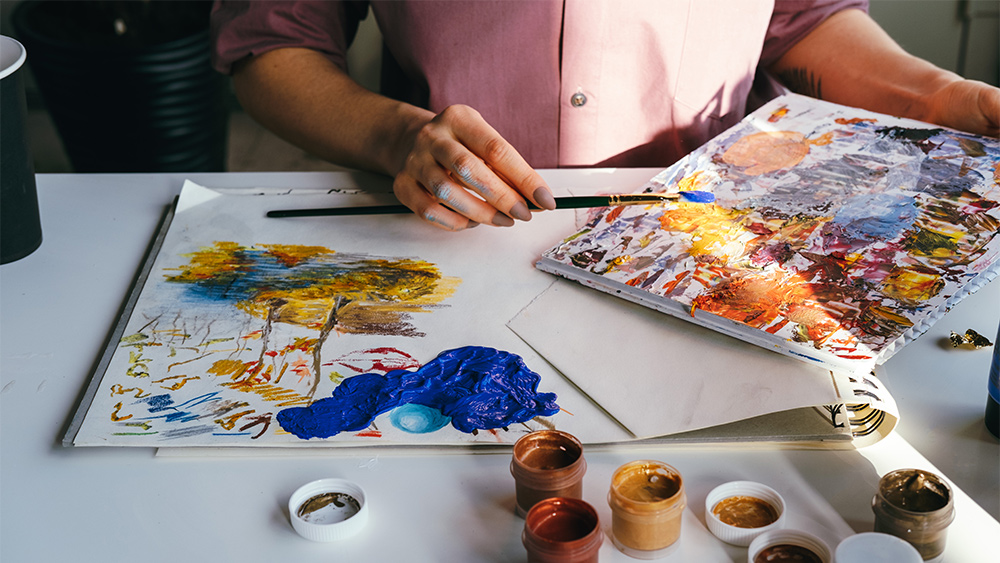When diving into the vibrant world of acrylic painting, both novice and experienced artists often encounter the cleanup conundrum: Are acrylic paints washable? This question is especially pertinent for those working in shared spaces, with limited time for cleanup, or teaching young aspiring painters. Understanding the washable nature of acrylic paints can significantly impact your approach to project setup, execution, and, most importantly, cleanup. This article explores the nuances of acrylic paints, offering insights and tips for managing your painting process more effectively.
Understanding Acrylic Paint Properties
Water-Based vs. Permanence
Acrylic paints are renowned for their versatility and ease of use, largely due to their water-based composition. When wet, acrylics can be diluted and cleaned with water, making them more user-friendly than oil-based alternatives. However, once they dry, acrylic paints become water-resistant, complicating removal from surfaces and fabrics.
Fast Drying Time
One of the defining features of acrylic paint is its rapid drying time. While this allows artists to work quickly and layer colors without lengthy waiting periods, it also means that accidental spills and splatters can become problematic if not addressed immediately. This fast-drying characteristic plays a vital role in understanding how and when acrylic paints can be washed off.

Strategies for Washable Application
Preemptive Measures
The best approach to dealing with acrylic paints’ semi-washable nature is to take preemptive measures. Using protective coverings for workspaces and wearing old clothes or aprons can save considerable cleanup time. Investing in palettes that can be soaked or easily cleaned and choosing brushes that withstand rigorous washing will also simplify the process.
Immediate Cleanup Techniques
For spills on hard surfaces, wiping them up immediately with a wet cloth can prevent staining. If acrylic paint reaches fabric, flushing the area with warm water before the paint dries can help. For tools like brushes, keeping a water container nearby to rinse them off periodically during use reduces the risk of dried paint accumulation, ensuring longer life for your brushes.

Washability on Different Surfaces
Hard Surfaces and Instruments
Acrylic paints are easiest to wash off from non-porous surfaces such as metal, glass, or plastic when still wet. Soaking painted instruments like brushes and palettes in warm water can help remove the paint. For dried paint, specialized cleaning solutions or rubbing alcohol can break down the acrylic polymer, aiding in removal without damaging the tools or surfaces.
Fabrics and Skin
While acrylic paint can stain fabrics once dried, fresh spills can often be cleaned with water and mild detergent. Pre-treat the stained area and wash as usual, checking the stain before drying. As for skin, warm soapy water is effective for removing wet paint; however, avoid harsh scrubbing, which can irritate the skin. For dried paint on skin, gently peeling it off or using an oil-based cream can help lift the paint.

Long-Term Considerations and Tips
Investing in Quality Cleanup Tools
To ensure a hassle-free cleanup process, investing in quality cleanup tools and materials is wise. Items such as a wash tub with a brush cleaning screen, quality paint scrapers, and absorbent cloths can be invaluable. Furthermore, having a dedicated cleanup station in your workspace encourages regular cleaning habits.
Educating Young Artists and Students
When working with young artists or students, teaching them about the importance of timely cleanup and proper paint handling can instill good habits early on. Providing clear instructions on the immediate care for brushes and immediate action on spills makes the painting experience enjoyable for all, without the dread of post-activity cleanup.

Preventative Actions and Workspace Setup
Setting the Stage for Simple Cleanup
Proper workspace preparation is crucial to mitigate the mess created by acrylic paints. Cover your work area with a disposable or washable drop cloth and have a roll of paper towels or rags at hand. Containers with lids can store wet brushes temporarily if you must pause your painting session. These simple preparations can save you from laborious cleaning later.
Choosing the Right Materials
Selecting materials designed for easy cleaning can make the washability of acrylics a non-issue. Silicone mats, water-resistant palettes, and stainless steel brush basins are all excellent choices. They resist acrylic paint adherence, making them a breeze to clean even after the paint has dried.

Post-Painting Cleanup Best Practices
Effectively Removing Acrylic Residue
Once you’ve completed your painting session, immediate cleanup is optimal. For brushes, don’t let paint dry on the bristles; wash them with mild soap and reshape the tips before leaving them to dry. For palettes and other tools, peel off the dried paint or use a razor blade for scraping without scratching the surface.
Tips for Stubborn Paint Removal
In cases where acrylic paint has dried and is stubborn to remove, soaking the area with a solution of warm water and mild detergent can help soften the paint. For tools and hard surfaces, products like isopropyl alcohol or acetone can be effective in breaking down the dried paint. However, use these solvents in well-ventilated areas and with suitable protective gear.
Teaching Effective Cleanup to New Artists
Incorporating Cleaning into the Art Process
When introducing new artists to acrylics, emphasize the importance of integrating the cleanup process into their creative practice. Demonstrating effective cleaning techniques and encouraging a tidy work habit from the start can help new artists avoid the distress associated with a messy workspace.
Building Good Habits Early
Encourage young artists or beginners to clean as they go, and to end each painting session with a thorough cleanup. This routine not only extends the life of their art supplies but also instills a sense of discipline that can positively affect their approach to art and other life activities.
Acrylic paints offer a remarkable balance between ease of use and durability in finished work. While they are washable when wet, their water-resistant properties upon drying present unique challenges for cleanup. By understanding the properties of acrylic paints, taking preemptive measures, and employing effective cleanup techniques, artists can navigate the cleanup conundrum with confidence. With the right strategies and tools, maintaining a clean, organized workspace becomes an achievable part of the creative process, allowing the focus to remain on the joy of painting.